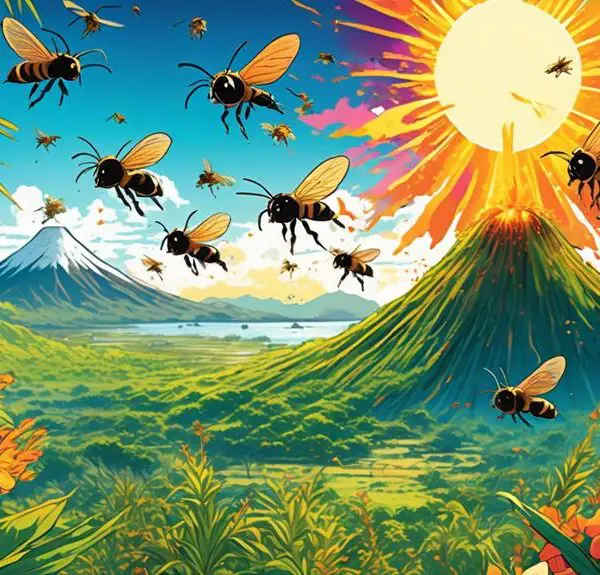Know how Mason bees thrive in Idaho's climate? Learn about their adaptation and vital role in our ecosystem.
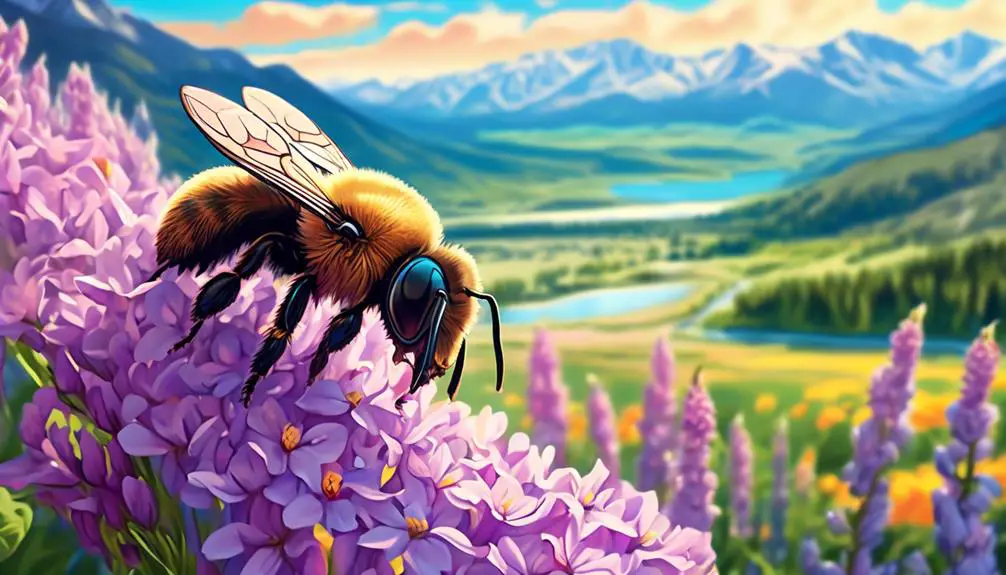
Are There Mason Bees in Idaho?
You might think Idaho's cold climate isn't suitable for bees, but that's not entirely accurate. In fact, Mason bees, a native species, are well adapted to the state's varied conditions.
These small, non-aggressive bees are quite different from their honeybee counterparts, and they play a significant role in our ecosystem.
Now, you might wonder, how have these Mason bees adapted to Idaho's climate, and what makes them special? Stick around, we're about to explore the fascinating world of Mason bees in Idaho and their impact on our environment.
Key Takeaways
- Mason bees are well adapted to Idaho's climate and can withstand cold temperatures.
- Their nesting behavior helps them survive in different weather conditions.
- Mason bees are efficient pollinators, with a pollination efficiency of about 95%.
- They play a vital role in maintaining the ecological balance and biodiversity of Idaho's ecosystems.
Understanding Mason Bees
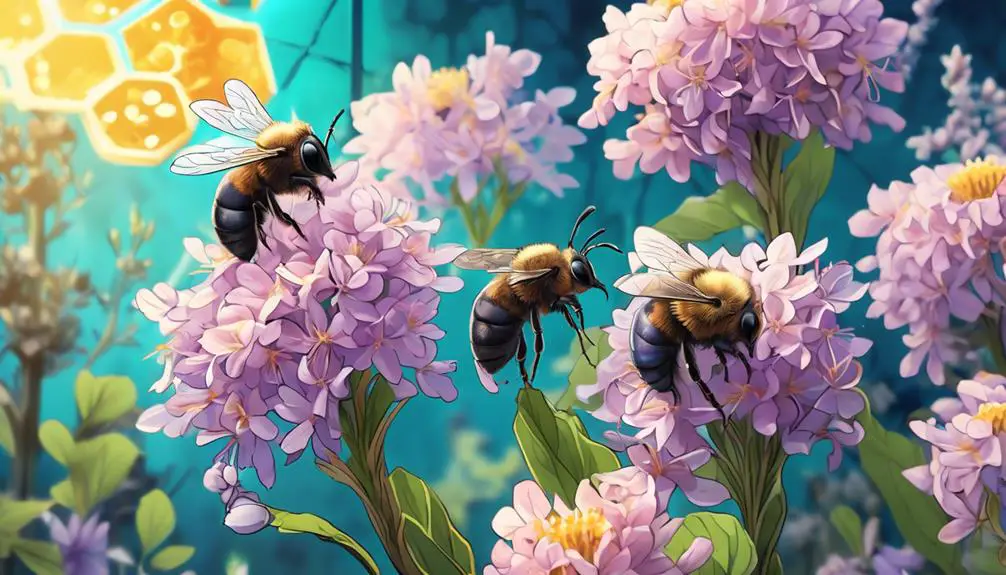
To truly comprehend the unique nature of Mason Bees, you must delve into their distinct traits, behavior, and ecological significance. You'll find these bees aren't your typical honey producers. They're solitary, not social, and they're also non-aggressive, so you won't need to worry about them stinging you unless trapped or squeezed.
Observed closely, you'll notice Mason Bees have a metallic sheen, ranging from blue to green. Unlike honeybees, they don't have pollen baskets and carry pollen on their abdomen. This trait makes them more effective pollinators; they unintentionally disperse more pollen as they buzz from flower to flower.
Their ecological role can't be understated. As efficient pollinators, they're vital for plant reproduction, contributing to biodiversity and the health of ecosystems. They also help in agricultural production, improving the yield of crops.
The 'Mason' in their name comes from their nesting behavior. They use mud to construct their nests, typically in hollow stems or man-made holes. Each nest houses an egg and a supply of pollen for the emerging larva.
Understanding these traits and behaviors illuminates the importance and uniqueness of Mason Bees in the intricate tapestry of Idaho's ecological system.
Mason Bees: Idaho's Pollinators

In Idaho's diverse ecosystems, Mason Bees serve as critical pollinators, enhancing both the natural environment and agricultural landscapes with their diligent work. These hardworking insects aren't just busy bodies, they're playing a significant role in the ecological balance and sustainability of Idaho's biodiversity.
You may wonder what makes these Mason Bees so special. They're solitary bees, which means each female is fertile and creates her own nest. This differs from honeybees, where there's only one queen bee that lays eggs.
Feature | Details |
|---|---|
Habitat | Idaho's diverse ecosystems |
Role | Primary Pollinators |
Nesting | Solitary, every female is fertile |
Pollination Efficiency | 95%, compared to honeybees' 5% |
Benefit | Boosts ecological balance and biodiversity |
Mason Bees have a higher pollination efficiency, about 95%, compared to honeybees' mere 5%. This makes them indispensable to Idaho's ecosystems. Their solitary nature also reduces the risk of disease spread, which is a common problem in honeybee colonies.
As you can see, Mason Bees are Idaho's unsung heroes. They're small but mighty, and their contribution to Idaho's ecosystems is immeasurable. So, next time you're out in nature, take a moment to appreciate these tiny pollinators.
Habitat Preferences of Mason Bees
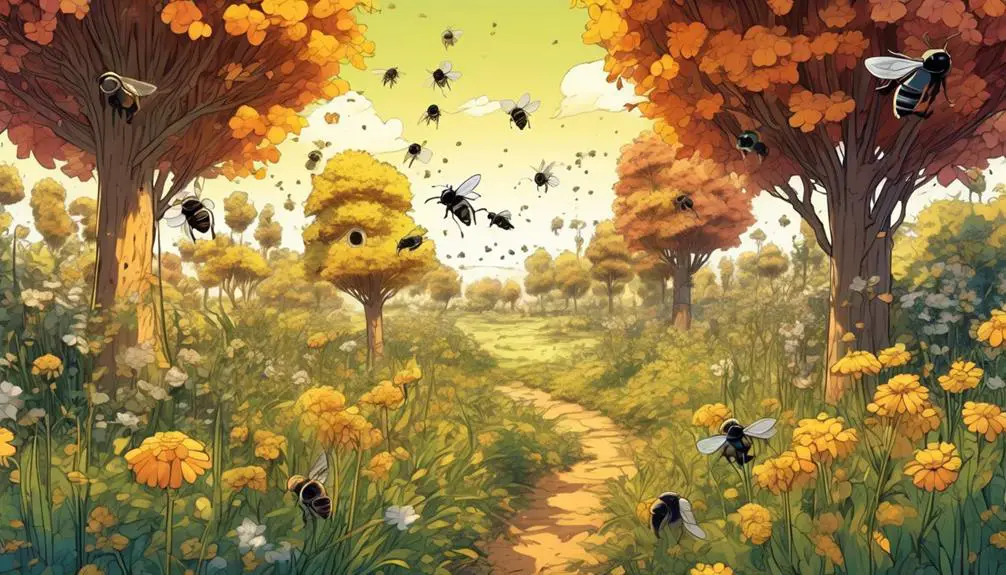
Venturing into the diverse landscapes of Idaho, you'll find Mason Bees thriving in a variety of habitats, showcasing their adaptability and resilience. These solitary insects prefer environments with abundant flowering plants, as they rely heavily on nectar and pollen for food. They're particularly fond of fruit trees, making them vital for Idaho's fruit farming industry.
Unlike honeybees, Mason Bees aren't hive dwellers. They prefer to nest in small crevices or pre-existing holes in wood, often found in old trees or untreated lumber. These bees aren't fussy about elevation either, they're quite comfortable at sea level or high in the mountains.
Interestingly, Mason Bees have a knack for adapting to urban settings as well. You'll find them nesting in man-made structures like cracks in walls, or in specially made bee houses. It's this adaptability that allows them to thrive in a variety of conditions, making them a resilient, yet often overlooked, part of Idaho's ecosystem.
Caring for Mason Bees in Idaho
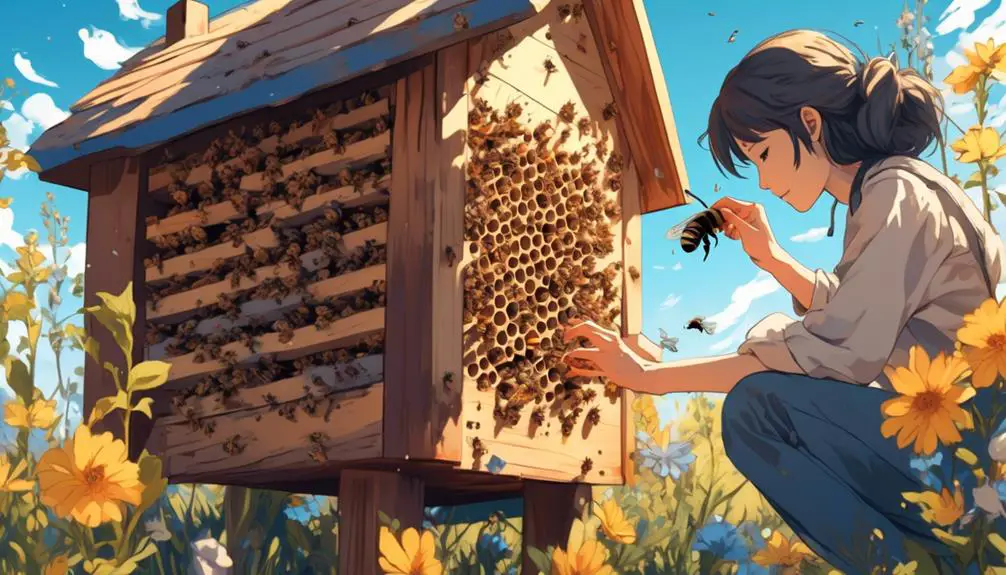
Given their adaptability and importance to Idaho's ecosystem, it's crucial that we understand how to properly care for Mason Bees to ensure their continued prosperity.
Start by providing an optimal habitat. Mason Bees prefer holes in unpainted wood or specifically designed bee houses. Ensure you've got holes of varying sizes, ideally between 5/32 and 3/8 of an inch. Place these habitats in an area that gets morning sunlight and is shielded from wind and rain.
Next, focus on nutrition. Mason Bees feed on nectar and pollen, so planting a variety of native flowering plants that bloom throughout the spring and summer is essential. Avoid chemical pesticides, as they can harm bees.
One critical aspect of Mason Bee care is managing parasites and disease. Regularly check for signs of mite infestation, such as discolored cocoons. Remove affected cocoons and clean nesting sites to prevent the spread of disease.
Lastly, remember that Mason Bees are solitary creatures. They don't produce honey or wax, so they don't need the same level of care as honeybees. However, your efforts in providing suitable habitats and nutrition can significantly contribute to their survival and prosperity.
Impact of Mason Bees on Idaho's Ecosystem
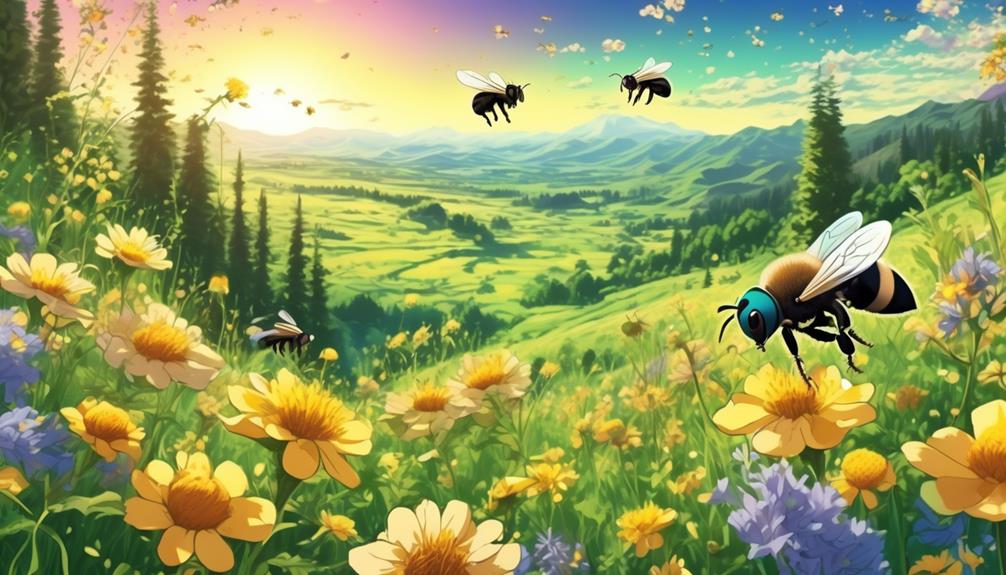
Unbeknownst to many, Mason Bees play a pivotal role in Idaho's ecosystem, particularly in the pollination of native plants and crops. As efficient pollinators, they significantly contribute to the biodiversity of Idaho's flora. Their unique behavior of dabbing pollen onto the flower's stigma, rather than brushing it off like honeybees, ensures a higher rate of successful pollination.
Mason Bees' pollination is also crucial for Idaho's agricultural economy, specifically within the fruit and nut industry. You'll find their work evident in the bountiful yields of apple, cherry, and peach orchards across the state. Without these bees, farmers would likely face decreased productivity and higher costs trying to replace their efforts artificially.
But it's not just about flowers and fruit trees. Mason Bees also play a role in soil health. The females excavate burrows in the ground to lay eggs, which aids in soil aeration and nutrient cycling. This natural tilling process contributes to a healthier, more fertile topsoil.
Conclusion
Indeed, you'll find mason bees in Idaho, playing a key role as potent pollinators. These industrious bees favor habitats with ample food sources, especially flowering plants.
If you're looking to support them, remember they need adequate nesting sites like hollow stems or handmade bee houses.
Their impact on Idaho's ecosystem is remarkable, assisting in the pollination of various crops and wild plants. Therefore, cherishing and protecting these tiny powerhouses is crucial for Idaho's biodiversity.

